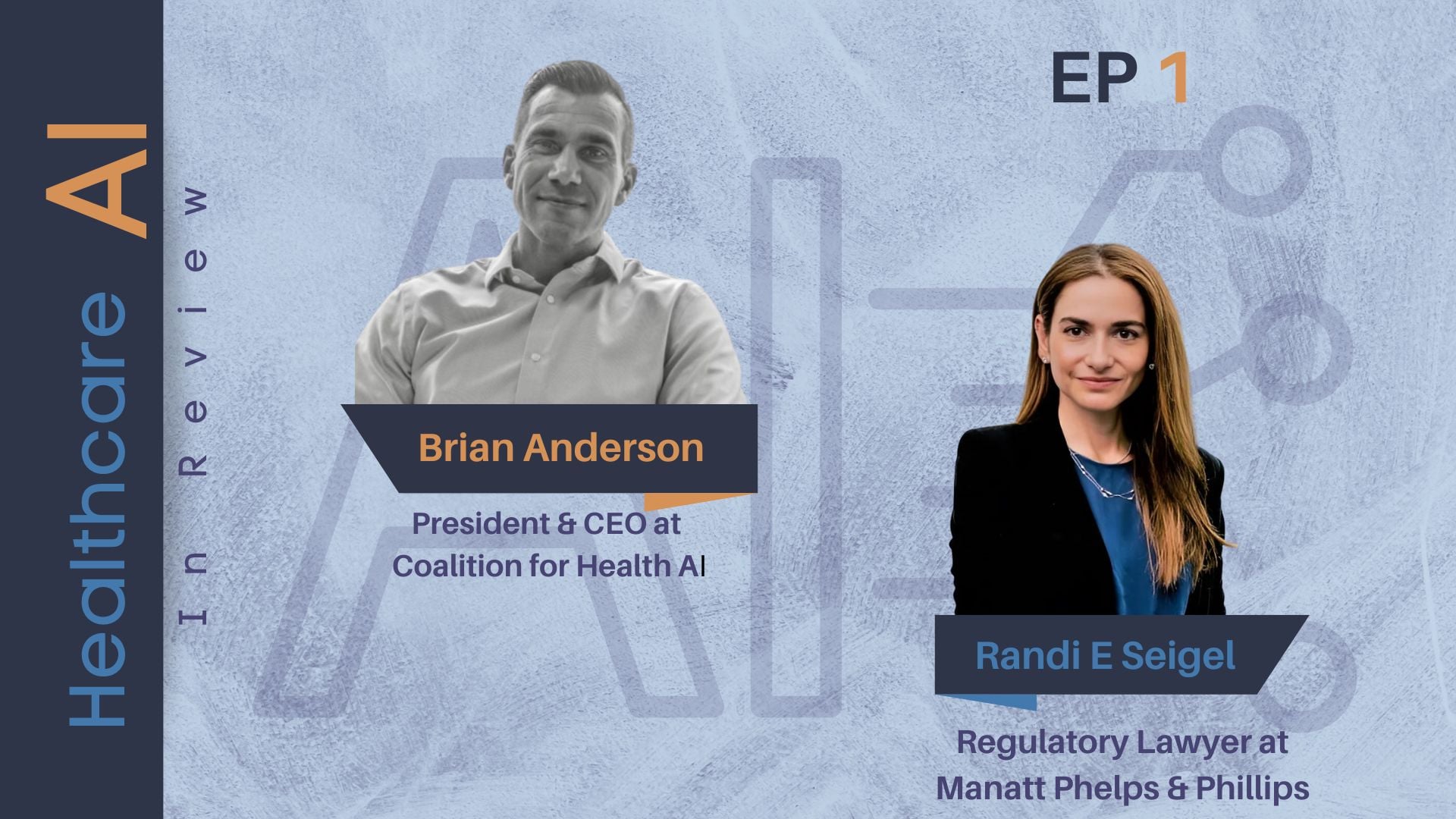#1 – Brian Anderson, President and CEO at Coalition for Health AI (CHAI) & Randi E Seigel, Healthcare Regulatory Lawyer at Manatt Phelps and Phillips

Our Guests
- Brian Anderson, President & CEO at Coalition for Health AI
- Randi E. Seigel, Healthcare Regulatory Lawyer at Manatt Phelps & Phillips
Moderated By
In This Episode, We Discussed:
- Coalition for Health AI's Mission: Brian Anderson shares the Coalition’s goals to standardize definitions of responsible AI and develop quality assurance labs.
- Regulatory Perspectives: Randi E. Seigel discusses federal and state activities, from transparency frameworks to privacy concerns in AI regulation.
- AI's Role in Healthcare: The potential of AI for identification, prediction, and data translation is explored, along with the risks of bias and transparency challenges.
- State vs. Federal Regulation: Insights into the complexity of varying state regulations and the hope for a more unified federal framework in AI governance.
- Future of AI Assurance: A vision for geographically diverse assurance labs to validate AI models for safety and effectiveness across different regions.
Watch
Listen
Guest Information
Learn More About Each Guest!
- Brian Anderson
LinkedIn https://www.linkedin.com/in/bandersmd/
- Randi E. Seigel
LinkedIn https://www.linkedin.com/in/randi-seigel-b1676a5/
Also, be sure to follow Slice of Healthcare on our social channels:
- Website - LinkedIn - Twitter - YouTube - Newsletter -


